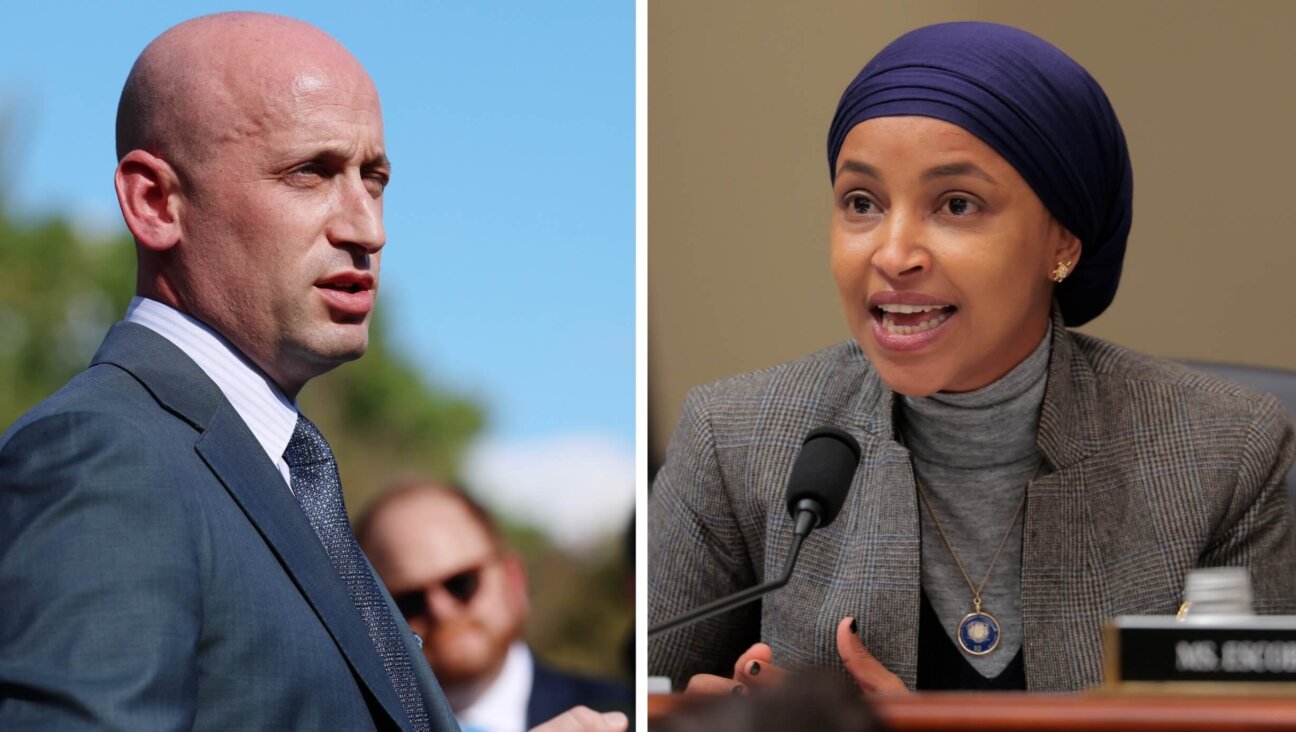Wearable Art: Israeli Designs on Display

Graphic by Angelie Zaslavsky
A new exhibit at the largest museum in New Jersey, The Newark Museum, presents a side of Israeli art rarely seen outside the country. The show, titled Women’s Tales: Four Leading Israeli Jewelers, contains the work of several of Israel’s pre-eminent contemporary jewelry makers, whose designs explore themes of living as a woman in Israel.
The jewelry in the show examines such subjects as war, immigration and forming connections to the land. Though each woman has a highly individualized style, collectively the work comes together to comment on the turbulence and strife that defined much of their lives in Israel over the past half-century. One artist, Bianca Eshel-Gershuni, found herself fashioning a brooch during the Gulf War, complete with two sample vials of men’s cologne serving as missiles. Another, Vered Kaminski, eschews precious gems in favor of Jerusalem stones in her intricately detailed metalwork.
In fact, preciousness, or the lack thereof, is a big theme for these jewelers, as well as for many of the other artists working in the field. Contemporary jewelry, as distinct from commercial jewelry, explores notions of value and wearability through material choices and design. The work is often like small sculptures that can be worn around one’s neck or pinned to a shirt. Though still for the most part a niche in the art world, contemporary jewelry has begun to receive more widespread attention from art shows and collectors in the past 10 years.
Each of the four artists in the show, ranging in age from 50s to 70s, takes a unique approach to telling “Women’s Tales” through jewelry. Deganit Stern Schocken’s work reflects urban landscapes, a byproduct of her architectural training. Eshel-Gershuni’s elaborate pieces explore folklore and rituals. Kaminski’s work plays on process, material and form. And Esther Knobel’s contains elements of humor and playfulness while exploring notions of immigration and displacement.
Davira Taragin, director of exhibitions and programs at Wisconsin’s Racine Art Museum and the show’s curator, said she chose these four artists rather than doing a general survey because she wanted to focus on individuals who had shown a long-term dedication to the art forum and were making conceptual statements in jewelry.
She traveled to Israel during the curating process, which, like the pieces of art, became highly individualistic and personal.
“I really got to know the artists. They all talked to me about how their work reflected their lives in Israel as women, and I was moved by all of them,” she said. “I was interested in seeing how women artists through the century respond to war as a wife and mother.”
Before its current run at The Newark Museum, the exhibit was displayed at three other venues in the United States, including the Racine Art Museum, where the project originated. After the United States, there are plans for the show to travel to Europe, with a final stop at the Israel Museum during 2009-2010.
While the exhibit may be limited to four artists, its origins connect to a larger attempt to give Israeli decorative arts a push in the world art scene.
Around six years ago, Dale and Doug Anderson traveled with fellow philanthropists Charles and Andrea Bronfman to Israel to survey the art scene. The Andersons, devoted patrons of the arts, quickly assessed that while the country’s sculptors and painters had been able to achieve international notoriety, Israeli decorative artists had few opportunities to show their work abroad.
Shortly after uncovering the challenges to those working in such areas as ceramics, furniture, glass and jewelry, the foursome figured out a way to help. In 2003 they founded the Association of Israel’s Decorative Arts in order to help give these artists a push in the international art scene.
When AIDA came to Taragin at the Racine Art Museum, one of the foremost decorative art museums in the country, to brainstorm about how to make its mission happen, she quickly thought of a line from a book published more than two decades ago.
“I am a curator, I have a one-track mind and I thought it would be great to have an exhibition,” she said. “I read a book about new jewelry a long time ago, and I remember them briefly mentioning contemporary jewelry in Israel.”
As Taragin began to explore the topic, she found that Israeli artists did, in fact, have a unique style. In the late 20th century, American jewelers were creating high-concept sculptural works that put little focus on functionality. During the same time, European jewelers were exploring new materials and new processes while still valuing wearability.
“I found that Israelis were very distinctive,” she said. “Like the new jewelry of Europe, they were exploring materials and kept the body in mind. However, they also contain a narrative somewhat more typical of American art.”
Elissa Strauss is a writer living in New York City.
















